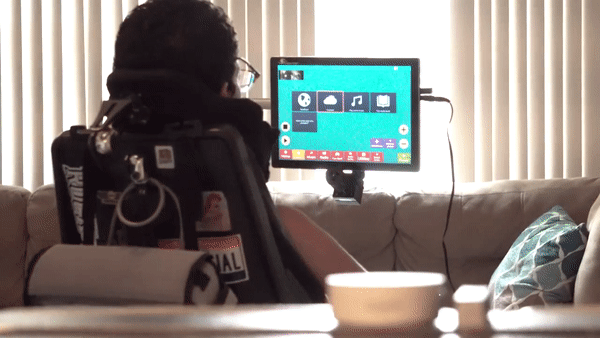Eye tracking devices help individuals with no control, or only limited control, over their hand movements. Eye trackers follow the movement of the eyes to allow the person to navigate the web and to type on custom screens. People living with disabilities or degenerative diseases are benefiting from eye tracking technology, including patients with ALS, multiple sclerosis, brain injuries, muscular dystrophy, cerebral palsy, spinal cord injuries and more. Here are three ways eye tracking devices allow users to harness the power of their eyes to communicate.
Spinal Cord Injuries
Quadriplegia resulting from spinal cord injury is another disability that can be aided by the Eyegaze Edge®. The system is often an excellent tool for people who are ventilator-dependent and quadriplegic, especially if they are non-verbal. It is also being used by some people with spinal cord injuries who are verbal, or who are able to move their heads, but find direct-selection with the eyes a faster and easier method of computer access than alternative methods of row/column scanning, voice control, or mouth or unicorn sticks.
Muscular Dystrophy, Spinal Muscular Atrophy, Werdnig-Hoffman Syndrome
Children and adults with MD, SMA, and Werdnig-Hoffman can benefit from the ease of positioning of the Eyegaze Edge®. Because the Eyegaze Edge® works accurately in any position, users with these diseases find it very comfortable to use. Children with SMA as young as 15 months are able to use our device effectively.
Cerebral Palsy
Many children and adults with cerebral palsy are currently using the Eyegaze Edge® to participate in school, from kindergarten through college, and in the workplace. Because controlling the eyes does not elicit a movement response in the body, many people with CP are proficient Eyegaze Edge® users. The eyes are a part of the brain, and controlling them does not cause movement in other parts of the body once the user becomes relaxed.

